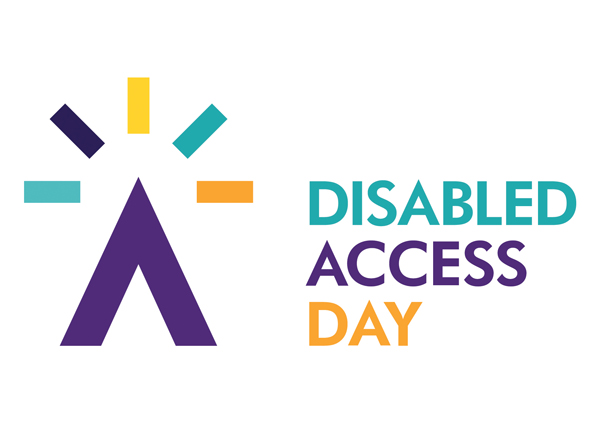Why You Don’t Have to Walk on the Walking Bus

Have you ever pushed a wheelchair? Have you ever used one yourself?
Until recently my only experience of wheelchairs was for a speedy dash from our car to the labour ward; fourteen years ago thanks to a convenient wheelchair my daughter was born in a bed and not in the hospital car park.
Then last year my dad’s declining health and my determination that he should be able to ‘get out and about’ as much as possible meant I became more familiar with wheelchairs and some of the issues users face.
Today is Disabled Access Day (or Days, as it’s 10 to 12 March) and the message this year is ‘try something new’. Although I don’t claim to be an expert on accessibility, this gives me the perfect opportunity to look at how it can be integrated into your walk-to-school initiatives and school travel planning.
For many of us ‘accessibility’ is an issue we care about but don’t fully understand; we see special slopes for wheelchairs by pedestrian crossings (handy for kids on scooters too), we put ‘alt tags’ on web images to make them understandable for visually impaired users, we respect that disabled parking spaces are left clear for those who need them. But there’s so much more to it.
As I said, I’m not an expert on accessibility… but I know of a guy who knows this subject. I first saw George Fielding, teamed with his dad, on popular tea-time quiz show ‘Pointless’. He is Chair of the Kidz Board of Whizz Kidz charity and his campaigning has helped change perceptions of disability from politics to sport to the wider media. He is also a Young Advisor for the #iwill campaign which encourages social action amongst 10 to 20 year olds. In 2012 he was awarded the British Empire Medal for his work. Oh yes, and they won Pointless.
In his blog today George highlights two questions shared by the Disabled Access Day and #iwill campaigns:
- What does it mean to actively take part in society?
- How can we best work together to ensure all in society enjoy the same level of opportunity?
He also writes about the value of trying something new: ‘#YouAndSomewhereNew is hopefully a hashtag you’ll see and use a lot this weekend. Yes, it’ll primarily point to the possibility of removing the physical and attitudinal barriers that too often prevent those with disabilities fulfilling their potential but I believe its relevance is wider. As citizens in an increasingly interdependent world we all benefit when broadening our horizons, breaking out of our routines, shaking hands and meeting people – we are social creatures and variety is valuable.’.
So if you are planning a walk to school scheme or writing your school travel plan (deciding how your school will promote active, safe, sustainable travel) here are some ways of either making your schemes more accessible and enabling others to try something new… or just making life easier by removing barriers:
1. You Don’t Have to Walk on a Walking Bus. Pupils who need a wheelchair to get around should be included too and the fact you are walking in a group means their parent or carer doesn’t have to be the only one to push. And they may be able to get out of the wheelchair and walk some of the way. Great example of this from Inzievar Primary School on BBC Scotland.
2. SENs Teach Independent Travel. Special Educational Needs schools (SENs) may see developing a School Travel Plan as a challenge – transport is usually provided and so walk-to-school schemes don’t seem relevant. Also, their pupils may have a wide range of special needs. For them, a school travel plan can be more about encouraging and teaching independent travel and road safety. For example, teachers can take pupils on a bus so they can learn how to read timetables, buy tickets and travel confidently.
3. Pedal power. At an Eco Fest years ago I remember a vast range of bicycles for all abilities, including trikes and tandems which children and adults of all abilities were enjoying. Cycling UK has useful info on inclusive cycling, adapted bikes and groups to join. Visually impaired cyclists can enjoy cycling by riding a tandem.
4. Safe Parking. Most schools have problems with parents parking too close and causing congestion, pollution and traffic dangers at peak times. If your school can run a successful ‘safe parking’ campaign (look out for our blog on this) it will help keep the area free for those who genuinely need to park right outside school. This could benefit either a child or parent with mobility issues. (Inspired by memories of having to drive my son to school when he had a broken foot).
5. Park and Stride. For some pupils with mobility issues, walking the whole way to school is not an option. However, walking part way could be. A park and stride scheme is when parents who would otherwise drive the whole way are encouraged to park 5 or 10 minutes walk away from the school. It keeps cars away from school gates and makes walking to school schemes accessible to more pupils including those who live a long way from school or who have mobility issues.
So with your active travel schemes I hope you are inspired to ‘try something new’ … and make it possible for everyone else to join you.
Thanks and credit to George Fielding for his blog article which inspired this, Disability Access Day for use of logo and Inzievar Primary School for being so great with their walking bus.